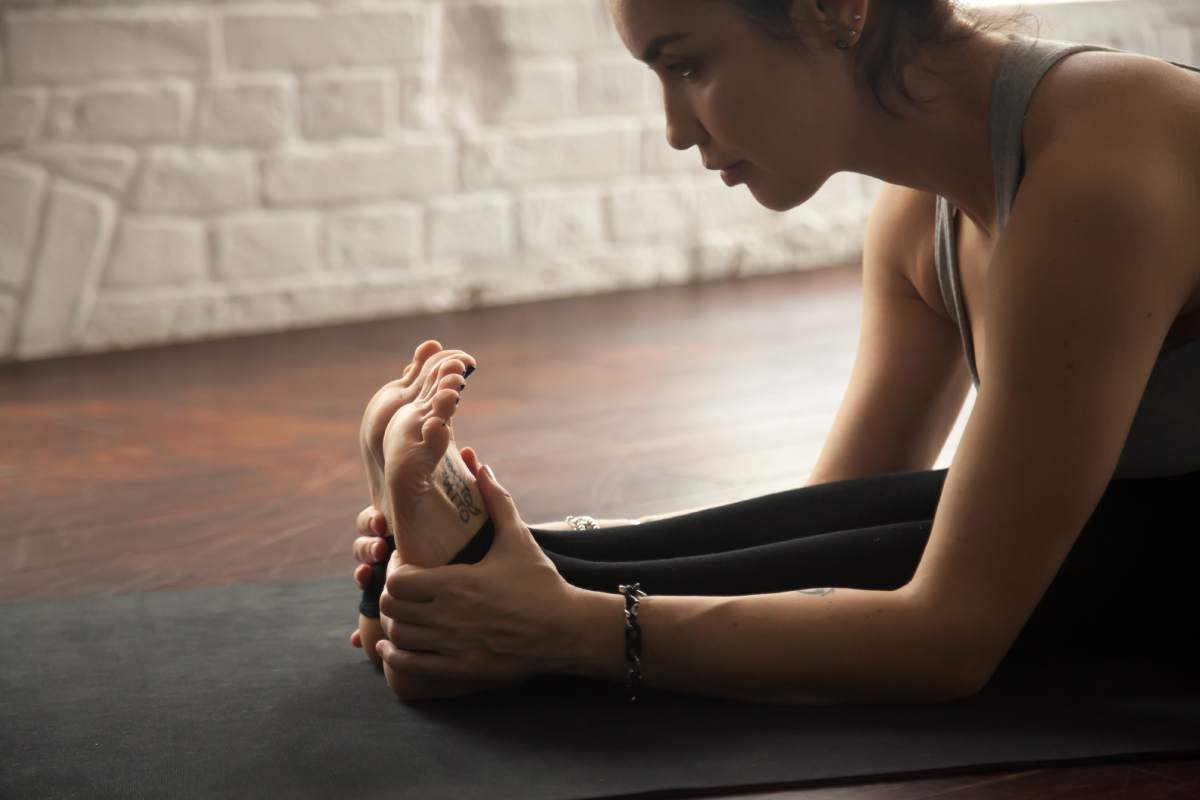Finding balance and flexibility in yoga often starts with mastering the basics. The yogi toe lock, known as Padangusthasana, is a fundamental technique that builds strength, focus, and body awareness. Whether you’re just starting your yoga journey or looking to improve your practice, this guide will walk you through everything you need to know about the yogi toe lock—no jargon, just clear advice.
What Is Yogi Toe Lock?
The yogi toe lock is a classic yoga grip used in various standing and seated poses. In Sanskrit, it’s called Padangusthasana—“pada” means foot, and “angustha” means big toe. This grip involves wrapping your index and middle fingers around your big toe, anchoring your thumb on top for support.
Why is it important?
- Stability: The toe lock grounds you, helping with balance in one-legged and forward-bending poses.
- Alignment: It encourages proper posture by aligning the spine and legs.
- Focus: The grip draws your attention to your body, improving concentration during practice.
Common poses using the yogi toe lock:
- Padangusthasana (Big Toe Pose)
- Utthita Hasta Padangusthasana (Extended Hand-to-Big-Toe Pose)
- Supta Padangusthasana (Reclining Hand-to-Big-Toe Pose)
Getting Ready: Preparatory Poses and Warm-Ups
Before you try the yogi toe lock, it’s important to warm up your body. This reduces the risk of injury and helps you get the most from your practice.
Recommended warm-up poses:
- Standing One-Legged Balances
Example: Tree Pose (Vrikshasana)
These poses build ankle stability and improve your sense of balance. - Seated Hip Openers
Example: Butterfly Pose (Baddha Konasana)
Hip openers increase flexibility in your hips and groin, making it easier to reach your toes. - Garland Pose (Malasana)
This deep squat stretches your ankles, calves, and lower back, preparing your body for forward bends. - Downward Facing Dog (Adho Mukha Svanasana)
This pose stretches your hamstrings and calves, which are key for reaching your toes comfortably.
Tips for warming up:
- Hold each pose for at least 30 seconds.
- Focus on steady, deep breathing to relax your muscles.
- Move gently and listen to your body—never push through sharp pain.
Step-by-Step Guide: How to Practice Yogi Toe Lock
Practicing the yogi toe lock doesn’t have to be intimidating. Here’s a straightforward guide to help you get started safely and confidently.
1. Find Your Starting Position
- Standing Variation (Padangusthasana):
- Stand with your feet hip-width apart.
- Inhale and lengthen your spine.
- As you exhale, hinge at your hips and fold forward, keeping your back as straight as possible.
- Seated Variation (Seated Forward Bend):
- Sit with your legs extended in front of you.
- Flex your feet and engage your thighs.
- Inhale, reach your arms overhead, and exhale as you fold forward from the hips.
2. Gripping the Toes
- Slide your index and middle fingers between your big toe and second toe.
- Wrap your fingers around the big toe and press your thumb on top to secure the grip.
- Keep your elbows slightly bent and relaxed.
3. Align Your Body
- For Standing Forward Bend:
- Keep your knees soft if your hamstrings are tight.
- Draw your shoulders away from your ears.
- Let your head hang heavy to release tension in your neck.
- For Seated Forward Bend:
- Keep your spine long—avoid rounding your back.
- Lead with your chest, not your head.
4. Hold and Breathe
- Hold the toe lock for 5–10 breaths.
- Focus on slow, steady inhalations and exhalations.
- With each exhale, see if you can gently deepen the stretch without forcing.
5. Release the Pose
- To come out, gently release your toes.
- Inhale as you rise back up (standing or seated), keeping your movements slow and controlled.
Common Mistakes and How to Avoid Them
Even experienced yogis can make mistakes with the toe lock. Here are some common pitfalls and how to correct them:
- Rounding the Back:
Keep your spine long and lead with your chest to avoid strain. - Locking the Knees:
Maintain a micro-bend in your knees, especially if you have tight hamstrings. - Gripping Too Hard:
Use a gentle grip—too much force can cause tension in your hands and shoulders. - Holding Your Breath:
Remember to breathe deeply and evenly throughout the pose. - Ignoring Body Signals:
If you feel sharp pain or discomfort, ease out of the pose and try a modification.
Modifications and Props for Beginners
Not everyone can reach their toes right away—and that’s perfectly normal. Modifications and props can help you practice safely and build flexibility.
Helpful modifications:
- Use a Yoga Strap:
Loop a strap or belt around your feet and hold the strap instead of your toes. This allows you to keep good alignment without straining. - Bend Your Knees:
Slightly bending your knees can make it easier to reach your toes and protect your lower back. - Try Alternative Hand Placements:
If you can’t reach your toes, grab your ankles or shins instead.
Tips for using props:
- Always keep your spine long, even if you’re using a strap.
- Focus on gradual progress—over time, your flexibility will improve.
Progressions and Variations
As you become more comfortable with the yogi toe lock, you can explore more advanced variations and integrate the grip into other poses.
Ways to progress:
- Move from Seated to Standing:
Once you’re comfortable in seated poses, try the lock in standing forward bends. - Add the Toe Lock to Balance Poses:
Practice Utthita Hasta Padangusthasana (Extended Hand-to-Big-Toe Pose) for a challenge in balance and flexibility. - Combine with Side Plank:
Advanced practitioners can try incorporating the toe lock into Side Plank (Vasisthasana) for added strength and control.
When to try advanced variations:
- Only progress when you can maintain good form in the basic pose.
- Take your time—there’s no rush to master every variation.
Safety Tips and Precautions
Practicing the yogi toe lock is generally safe, but it’s important to listen to your body and be mindful of your limits.
Who should avoid or modify the pose:
- People with recent hamstring, lower back, or knee injuries.
- Anyone with severe balance issues or vertigo.
- Pregnant individuals should consult a healthcare provider before attempting deep forward bends.
General safety tips:
- Warm up thoroughly before practicing.
- Avoid bouncing or forcing yourself deeper into the stretch.
- If you feel pain (not just a stretch), back off immediately.
- Practice on a non-slip yoga mat for stability.
Integrating Yogi Toe Lock into Your Yoga Practice
The yogi toe lock is more than just a grip—it’s a tool to deepen your yoga practice. Here’s how to make it a regular part of your routine:
- Add to Your Warm-Up:
Use the toe lock in gentle forward bends to start your session. - Include in Flow Sequences:
Integrate the grip into sun salutations or standing balance flows for variety. - Use as a Cool-Down:
Finish your practice with seated forward bends using the toe lock to relax and stretch your muscles. - Track Your Progress:
Notice improvements in your flexibility, balance, and focus over time.
Frequently Asked Questions
What if I can’t reach my toes?
Start with a strap or bend your knees. Flexibility will improve gradually with regular practice.
How long should I hold the pose?
Aim for 5–10 breaths, but listen to your body. If you feel discomfort, come out sooner.
Is the yogi toe lock safe for beginners?
Yes, with proper modifications and attention to alignment, beginners can practice safely.
Can I practice the toe lock every day?
Daily practice is fine, as long as you’re not pushing through pain or discomfort.
Conclusion
The yogi toe lock is a straightforward yet powerful addition to your yoga toolkit. It helps you build balance, flexibility, and focus—qualities that benefit both your practice and daily life. Remember, progress takes time. Use props, listen to your body, and celebrate every improvement, no matter how small.
Ready to give it a try? Roll out your mat, follow these steps, and discover how the yogi toe lock can transform your yoga journey.




